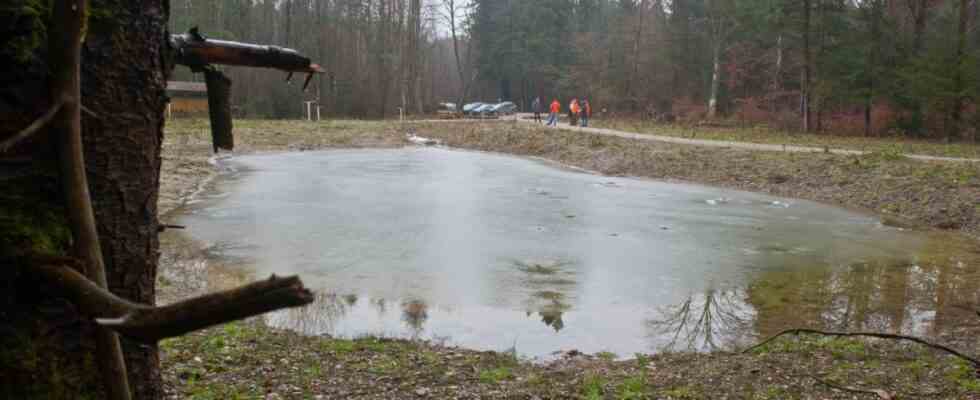Everyone now knows that a lot of natural gas is produced in Russia. Norway and the USA would also probably be able to name most of them as major suppliers of natural gas. But it wasn’t that long ago that natural gas from the region – so to speak “made in Ebersberg” – was used in industry and households. Until 1996, Neptune Energy produced natural gas in the Anzing field, which is largely located under the Ebersberg Forest. In 2007 they tried their luck there again, but the drilling did not bring the desired success. Since then, the boreholes have been quiet – and the renaturation should be completed soon, as a company spokeswoman explains: “The lid is on.” The fact that domestic natural gas production seems more lucrative today than it was a few years ago does not change that.
In retrospect, the numbers are quite impressive: The company Neptune Energy, based in Lingen, Lower Saxony, extracted a total of around 365 million cubic meters of natural gas from natural gas fields in Anzing and Moosach from a depth of 2500 meters. In Moosach, where natural gas was produced between 1962 and 1996, the plants were dismantled many years ago. The company was pinning its hopes on the Anzing site for even longer, the last well was drilled here just 15 years ago. However, it did not turn out to be economical.
The area around the well used to be surrounded by a fence.
(Photo: Neptune Energy/oh)
A company spokeswoman explains that although the wells could have been reactivated without any major problems for a number of years after that, in 2020 Neptune Energy began plugging the five remaining dormant wells. A few final measures are still missing, but the renaturation should be largely completed next spring. After that, the land will be returned to the owner – in most cases, the state forests – and the company will be released from the so-called mining supervision, at least that’s the plan.
Where the borehole used to be is now a biotope
“The work is far too advanced to be able to turn it back,” says the spokeswoman for Neptune Energy. There are also no plans for new drilling – at a press conference a year ago, this was not entirely ruled out. “But this is a very old field that has now been exhausted. Its lifespan has ended.”
The forest benefits from the end of gas production. Where borehole 5 was, a large biotope with a pond was created. It is intended to provide a habitat for amphibians and birds – an ecological upgrade for the Ebersberg forest, as experts emphasize.
Other signs that fossil fuels were once mined in the district of Ebersberg have long since disappeared. In the 1960s, drilling towers up to 40 meters high reached up into the air near Aßling, and up to the 1980s a good two million tons of crude oil were produced there. Aßling was a “oil-exporting community”, was sometimes joked at the time. But in the 1980s the quality of the oil from Aßling deteriorated so much that production was stopped. In 1995 the last borehole there was filled.
The topic of fracking – a controversial type of natural gas production – was already on the agenda in the district and was, so to speak, immediately cleared again. Because the British company Terrain Energy had received permission from the Bavarian state government in 2015 to search for hydrocarbons, i.e. oil, natural gas and coal, in certain areas in the Munich area, there was speculation about fracking in Glonn at the time. Quite apart from the fact that fracking has generally been banned in Germany up until now, he has never heard of the subject again, according to Mayor Josef Oswald.

